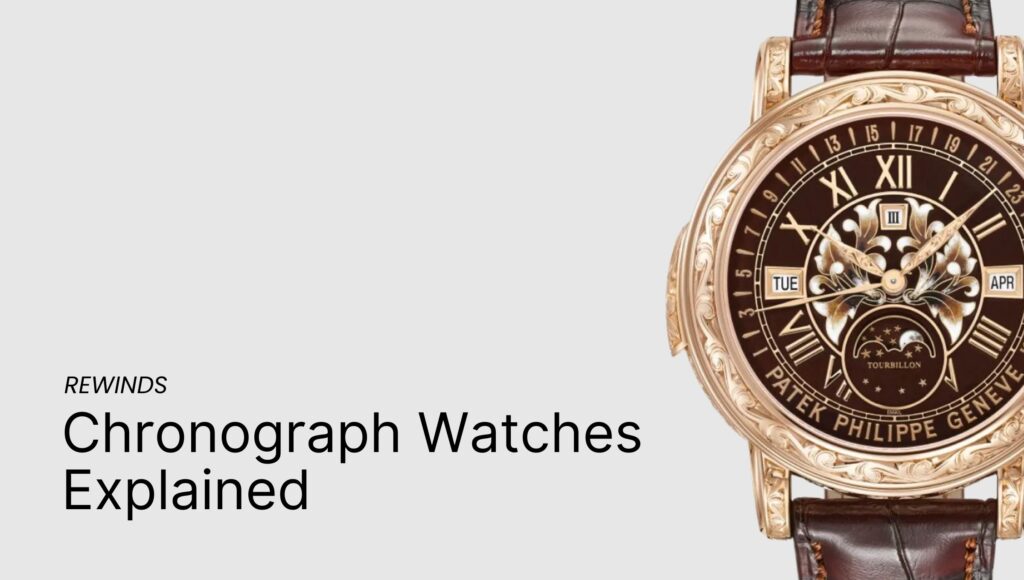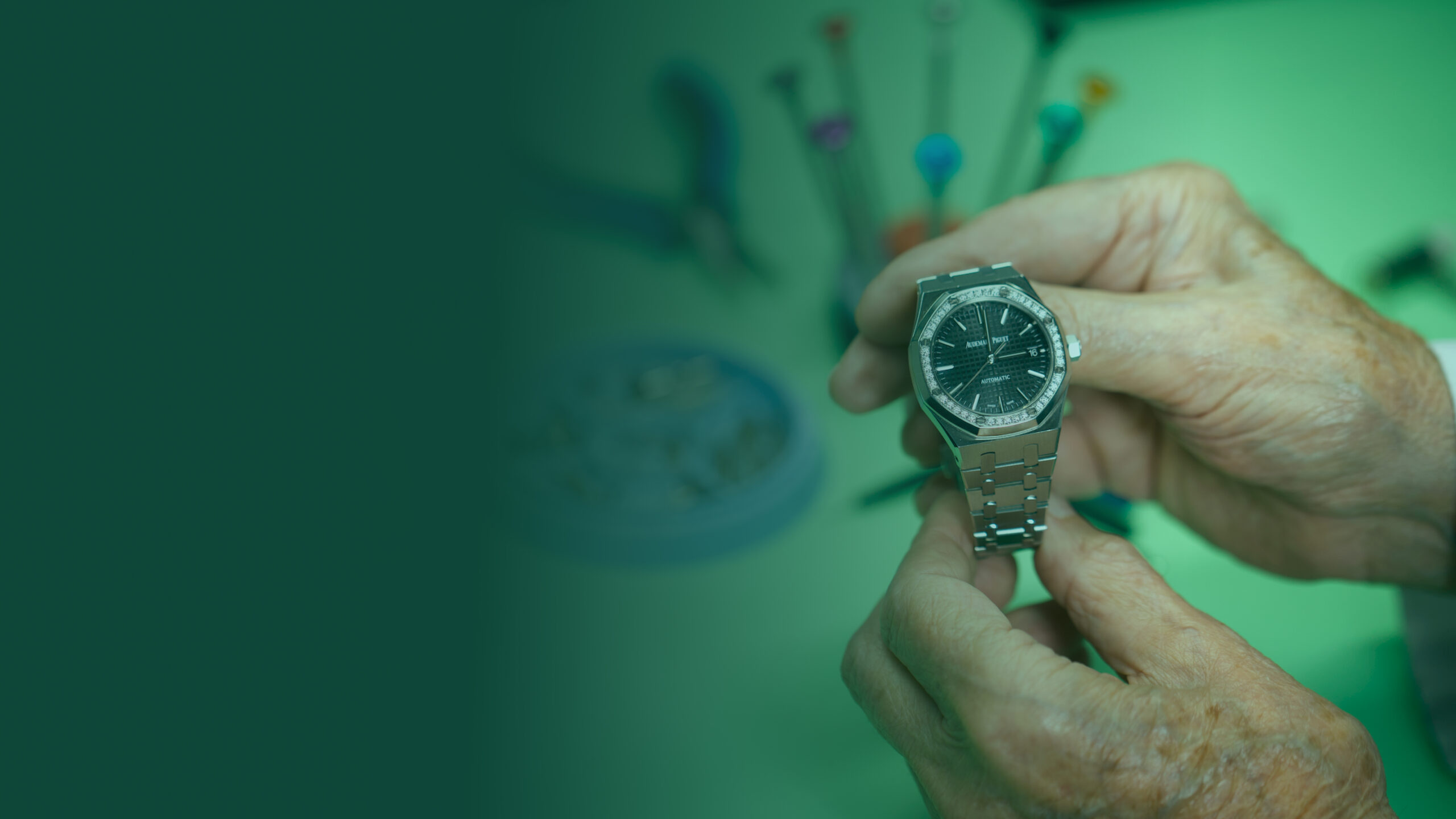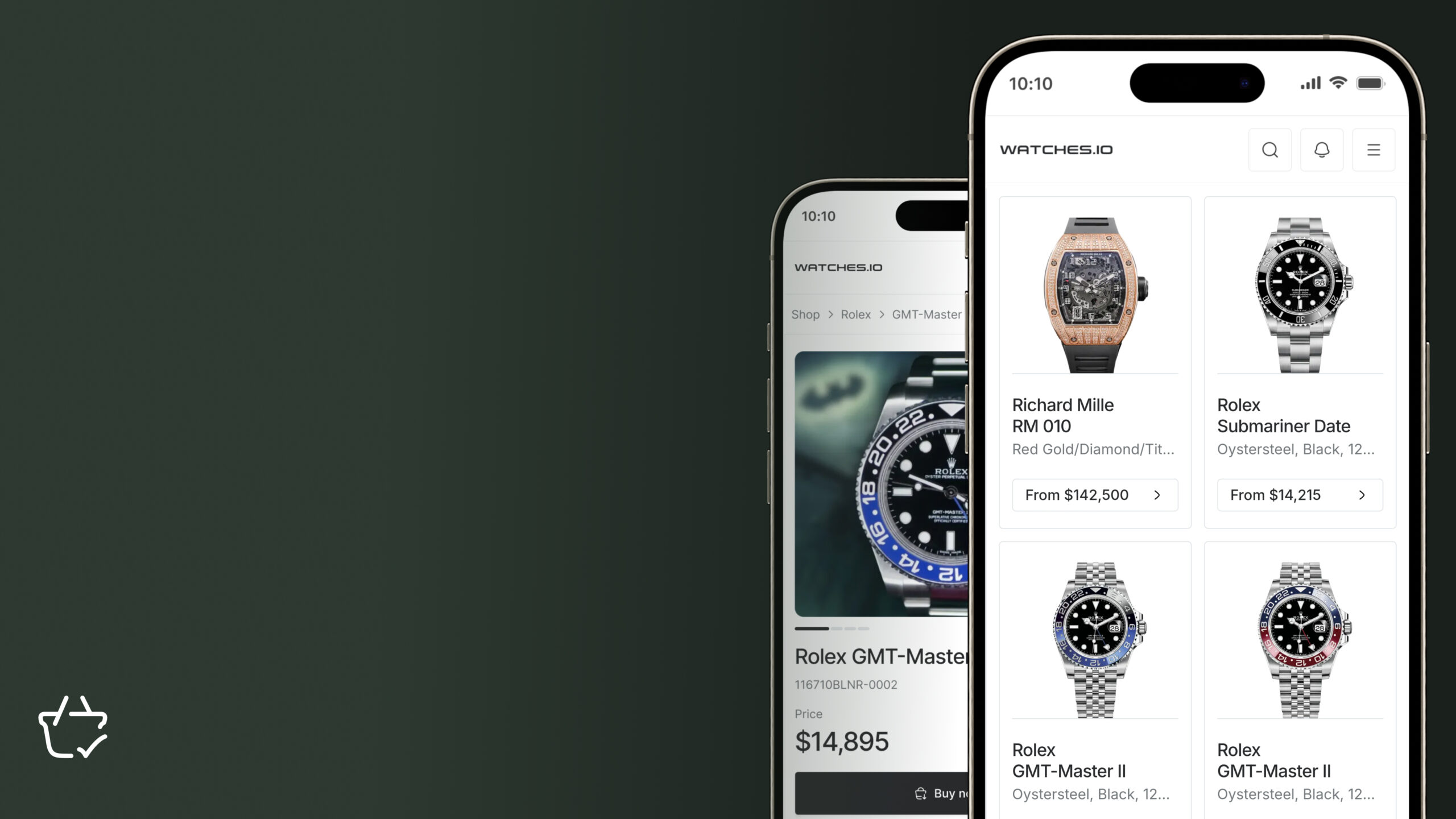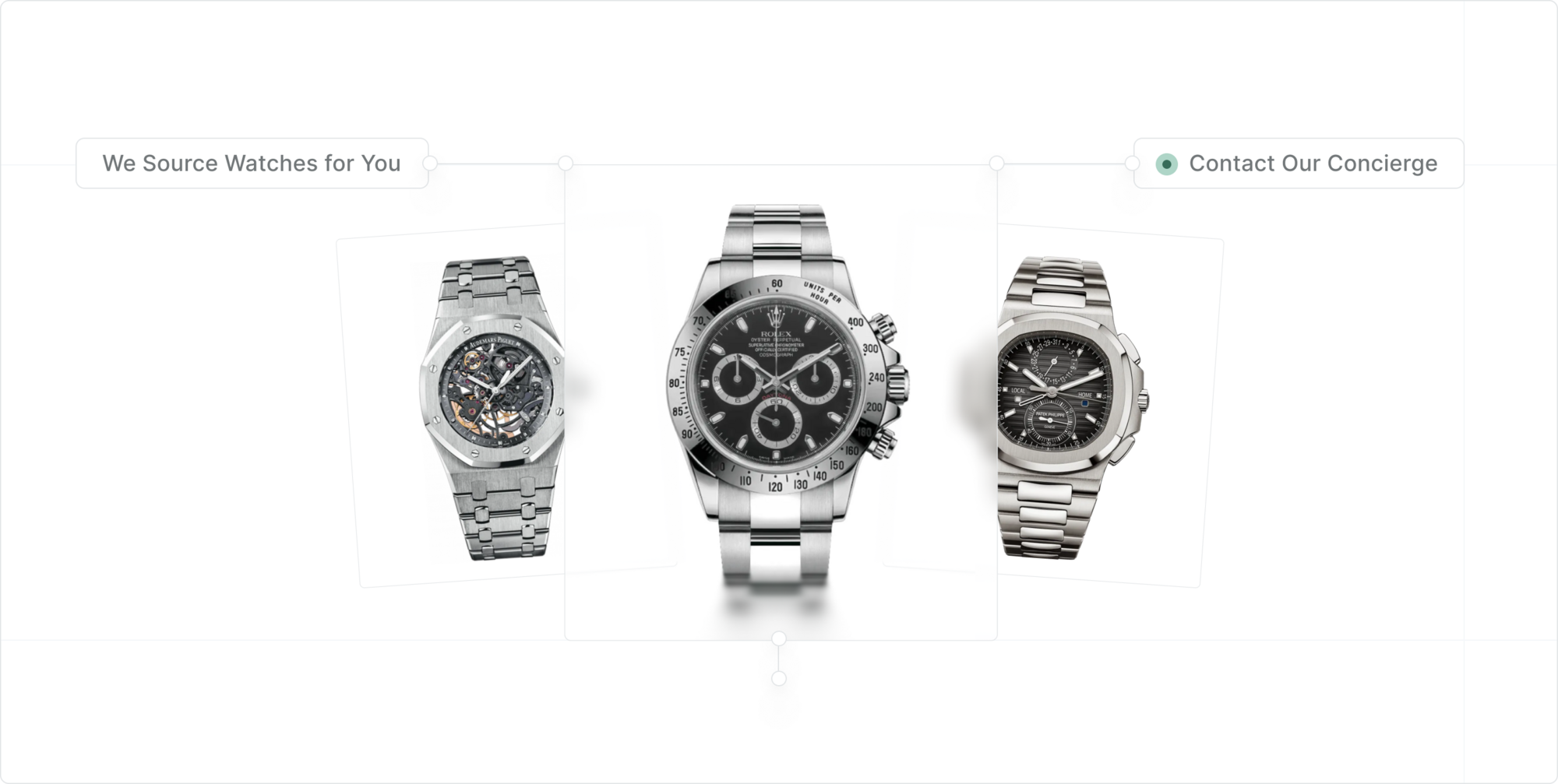A chronograph watch is a timepiece that beautifully balances style and functionality. It’s not just a normal wristwatch, but a timekeeping accessory with a precise stopwatch integrated seamlessly into its design. This dual functionality makes it an invaluable tool for on-the-go activities ranging from sports and aviation to everyday timing needs, and on top of that it can serve as a sophisticated style statement. A chronograph that successfully combines practical performance features with elegant design into the perfect blend of form and function is a versatile addition to your daily wardrobe.
Key Takeaways From the Blog
- A chronograph watch tells time like any other watch but also has a stopwatch function, controlled by buttons on the side.
- Chronographs come in mechanical (hand-wound or automatic) and quartz (battery-powered) versions, with mechanical ones valued for craftsmanship and quartz for accuracy.
- Pilots, race car drivers and doctors use chronographs for precision timing, but they are also popular among watch collectors for their design and history.
- Luxury brands like Rolex, Omega, Breitling, and Patek Philippe produce high-end chronographs known for their engineering, design, and historical significance.
How Does a Chronograph Watch Work?
The focal point of a chronograph watch is its movement, which can be mechanical (either automatic-winding or manual-winding) or quartz (battery-powered). This movement drives both the main timekeeping hands and the stopwatch mechanism independently. Typically, the watch includes additional hands and subdials to measure elapsed seconds, minutes and sometimes hours, providing precise time tracking for various activities. This functionality is controlled by pushers on the watch case separated by the crown. The start/stop pusher initiates and halts the chronograph seconds hand, while the reset pusher returns it to zero.
Some chronographs features various type of bezels like rotating bezels or tachymeter scales for measuring speed over distance. Advanced models may include special functions such as split-second (rattrapante) and flyback mechanisms for timing multiple intervals or quickly resetting and restarting the chronograph with a single press.
Rattrapante Chronograph
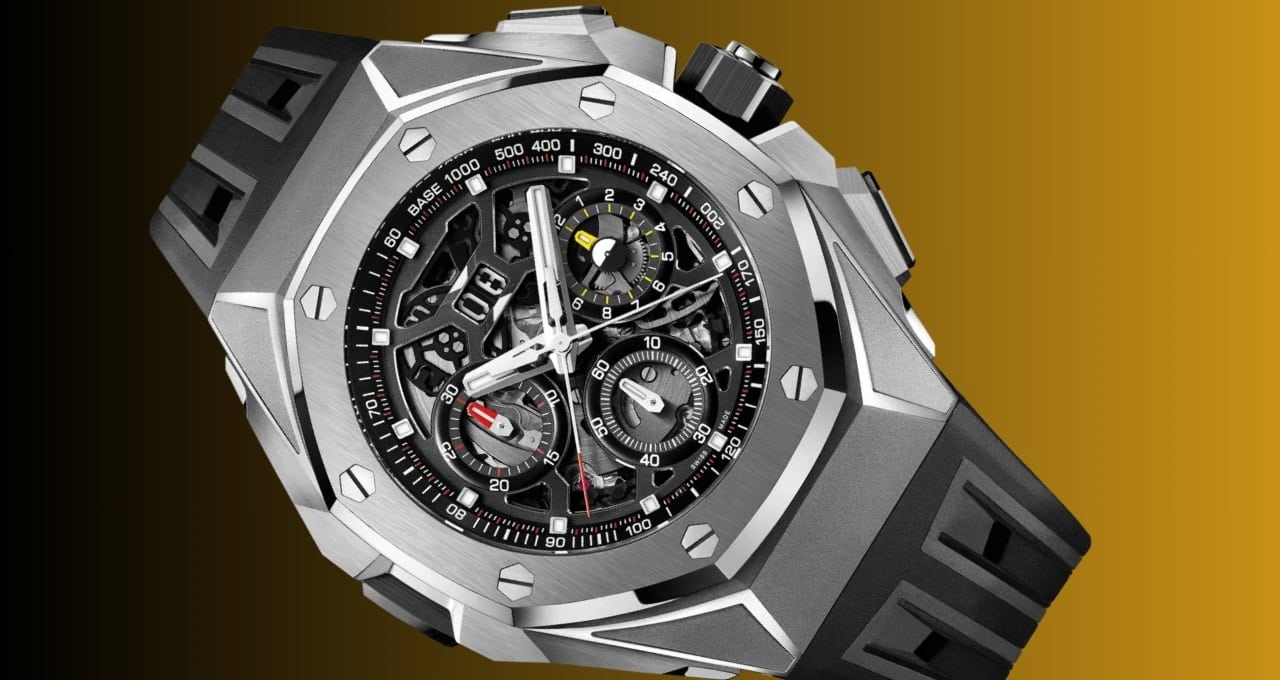
The Rattrapante Chronograph, also known as the double chronograph, possesses interval measuring capability and thus is ideal for timing races. It features two second hands that move together; one can be stopped to record split times and then restarted quickly to catch up to the main chronograph hand. The name “Rattrapante” comes from the French word “rattraper”, meaning “to catch up”. Adolphe Nicole developed the mechanism in the 19th century and it remains a valued feature in luxury sport watches, such as those by IWC and Patek Philippe.
Flyback Chronograph
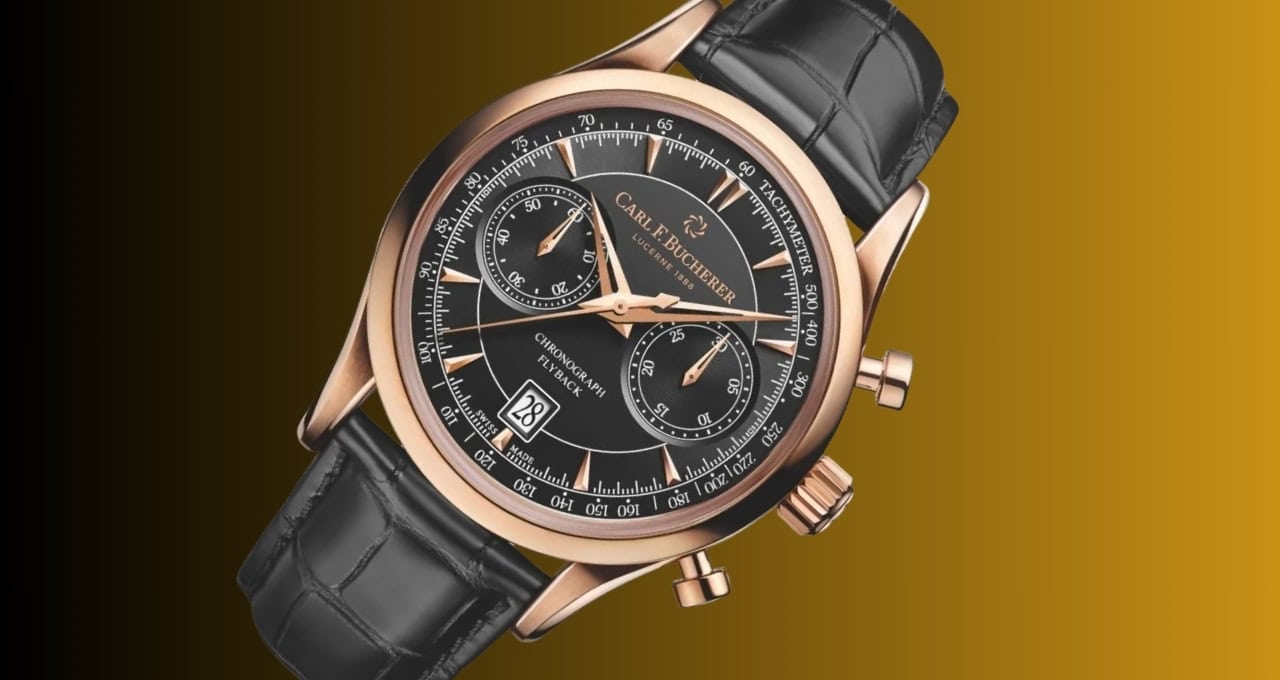
The Flyback Chronograph was developed by Longines in 1936. This chronograph watch lets the operator reset the stopwatch to zero and then immediately start a new timing interval with a single button press. This is achieved by pressing the second push-piece at 4 o’clock, which resets the time without stopping the ongoing measurement. The term ‘flyback‘ comes from how the chronograph hand swiftly returns to zero, as if in flight. In French, it’s called “retour en vol,” meaning “return in flight”. Today, Flyback chronographs are strongly associated with certain renowned brands like Breitling and Longines.
What is the Purpose of a Chronograph Watch?
Besides being a stylish accessory, a chronograph watch is a multifunctional tool used by professionals who require accuracy and precision in timekeeping. The chronograph’s features extend beyond the simple telling of time, offering practical applications in different scientific fields. Here are some of the key functionalities of a chronograph watch:
Tachymeter
The tachymeter, often found on the bezel of a chronograph watch, is a scale used for measuring speed. This feature is particularly useful for Formula 1, motorcycling and bicycling athletes who must accurately time their races. Additionally, a tachymeter may be used to measure the speed of fast-moving airborne objects such as planes and helicopters, providing an essential multifunction tool for aviation industry professionals.
Example: The Rolex CosmographDaytona is renowned for its tachymeter scale, which allows its wearer to measure speed over a known distance with great precision.
Telemeter
The telemeter scale measures the approximate distance from an event that can be seen or heard. It is especially useful in situations like observing lightning or fireworks or determining artillery firing range. The unit of measurement is typically kilometers, making it a practical tool for military and outdoor applications.
Example: Many high-end chronographs, including those from brands like Omega, feature telemeter scales for precise distance measurements.
Pulsometer
The pulsometer is a scale used by medical professionals, such as doctors and nurses, to take accurate calculations of a patient’s pulse rate. The feature converts a chronograph watch into an important and perhaps life-saving instrument in medical settings by allowing for precise heart rate measurements.
Example: Certain chronograph models from brands like Longines and TAG Heuer include pulsometers, highlighting their practical utility for healthcare professionals.
Why Every Watch Enthusiast Craves a Chronograph
For any watch lover, a chronograph is more than just a timepiece—it’s a gateway to a world of adventure where history, precision engineering and style come together in a uniquely captivating way. Here’s why a chronograph holds such a special place in the heart of every watch enthusiast:
A Testament to Engineering Excellence
Owning a chronograph feels like having a tiny marvel of engineering on your wrist. The intricate mechanics behind its stopwatch function reflect the pinnacle of watchmaking craftsmanship. Every movement of the chronograph hand and click of the button serves as a reminder of the craftsman’s skill and precision involved in creating these sophisticated timepieces. For those who cherish chronometry at its finest, this level of complexity is a joy to witness and appreciate.
Historical Significance
Chronographs have been present to mark some of the most exciting moments in history, from timing races at Le Mans to assisting astronauts on the moon. Owning one constitutes a tangible connection to these amazing stories, letting you wear a piece of historic nostalgia on your wrist. This seamless fusion of heritage and innovation resonates deeply with those who appreciate refined elegance and cutting-edge craftsmanship.
Practical Versatility
Chronographs are much more than handsome accessories—they’re also incredibly handy. The chronograph’s multifunctional design allows its operator to start, stop, and reset the timer with ease, making it a helpful go-to tool for a wide range of everyday activities. Whether you’re on the track, at the gym, or in the kitchen this watch is ready to keep up with your pace, blending into your routine seamlessly while adding a touch of luxurious style.
Aesthetically Engaging
There is something truly mesmerizing about the dial of a chronograph. The layout of subdials, the sweep of the hands and the precise markings create a rhythmic visual appeal that is both complex and beautiful. It is not just about looks or aesthetics—it’s about the joy of seeing a piece of intricate machinery work flawlessly, which is delightful for anyone who values design and craftsmanship.
Symbol of Status and Passion
Wearing a chronograph sends a clear message: you appreciate the finer things in life. It is a statement piece that reflects both artistic sophistication and genuine admiration for the art of watchmaking. Owning a well-respected model like a Rolex Daytona or an Omega Speedmaster foes further than just possessing a watch; it is about celebrating a passion for horology that only fellow enthusiasts truly understand.
Collector’s Joy
The world of chronographs is full of surprises that offer a diverse range of models to explore and collect. From vintage classics with their unique charms to modern innovations with cutting-edge features, there is always something new to discover. Finding that rare model or adding a coveted piece to your collection begets a thrill that is hard to beat, a satisfaction known only to those dedicated aficionados who live and breathe watches.
Our Popular Chronograph Watches
Our collection of high-end chronograph watches has captured the hearts of watch lovers everywhere, and as you scroll through our extensive listings you will soon be equally enthralled. Each piece blends timeless style with practical features that make them not only pleasurable to wear but valuable in utility. With their classic dials, smooth pushers and reliable performance, chronographs are ideal for any occasion. They are not just instruments of precision, but trusty companions in your everyday adventures, combining sleek beauty with rugged functionality in a way that makes every moment count.
Explore our curated collection at Watches.io and find the perfect chronograph to add to your luxury watch collection.
FAQs on Chronograph Watches
What is a chronograph?
A chronograph is a type of watch that includes a stopwatch function. It allows the wearer to measure elapsed time by starting, stopping and resetting a central second hand, usually controlled by pushers on the side of the watch case. Chronographs often have additional sub-dials, also known as counters, which display elapsed minutes and hours.
What are the 3 dials on a chronograph watch?
The three dials on a chronograph watch, also known as sub-dials, typically display:
- Seconds Counter: Continuously counts the seconds, independent of the chronograph function.
- Minutes Counter: Measures elapsed minutes when the chronograph is activated.
- Hours Counter: Measures elapsed hours when the chronograph is activated.
Which is better, analog or chronograph?
The choice between an analog watch and a chronograph depends on the wearer’s needs and preferences:
- Analog Watch: Simple, elegant, and easy to read. Ideal for everyday use and formal occasions.
- Chronograph: Offers additional functionality with stopwatch features and multiple sub-dials. It is suitable for those who need to measure time precisely and appreciate technical complexity.
Both types have their own advantages, and the “better” option is subjective, based on what features are most important to the wearer.
Why are chronographs so popular?
Chronographs are popular for several reasons:
- Functionality: They offer the ability to measure elapsed time, making them useful for a variety of activities.
- Design: The additional dials and pushers add a layer of complexity and visual interest to the watch, appealing to those who appreciate intricate designs.
- Versatility: Chronographs can be worn in both casual and professional settings, making them a versatile accessory.
- Heritage: Many iconic chronographs have historical significance, particularly in aviation, motorsports and space exploration, adding to their allure.
What is the difference between chronograph and chronometer?
A chronograph is about functionality (stopwatch), while a chronometer is about precision (accuracy).
- Chronograph: A watch with a built-in stopwatch function, allowing the wearer to measure elapsed time.
- Chronometer: A highly accurate watch that has been certified by an official testing institute, such as the Swiss Official Chronometer Testing Institute (COSC). Chronometers undergo rigorous testing to ensure their precision and reliability.
Does a chronograph watch use a battery?
Whether a chronograph watch uses a battery depends on the type of movement:
- Quartz Chronographs: These use a battery to power both the timekeeping and chronograph functions. They are known for their accuracy and lower maintenance.
- Mechanical Chronographs: These do not use a battery. Instead, they are powered by a wound spring, either manually or automatically. They are prized for their craftsmanship and traditional watchmaking techniques.
Both types have their own advantages, with quartz being more convenient and mechanical being more admired for their engineering and heritage.

